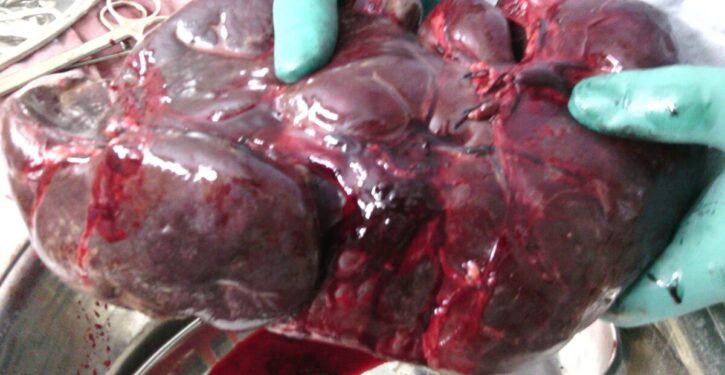
“For the first time, a person has received an experimental treatment to transform one of their lymph nodes into a functioning miniature liver. We won’t know for months whether the therapy works, but if it does, it could revolutionize the treatment of liver disease,” reports the New Scientist.
“This is a technology that could, in just the next few years, potentially eliminate the wait list for liver transplants,” says Michael Hufford, the CEO of LyGenesis, a biotechnology firm.
Spleens can already be turned into functioning livers, in mice. As the New Scientist explains, “Repurposing the spleens of mice helps them to survive liver damage. If the approach works in people, it could offer an alternative to liver transplants.”
Right now, people who need new livers sometimes have to wait years for a donor organ to become available. People may wait between 30 days to over 5 years for liver transplants. The average wait for a liver transplant from a deceased donor in the United Kingdom is 3 to 4 months.
Researchers have tried engineering livers in the lab, but have found it too hard to recreate their complicated blood vessel networks.
Lei Dong, the vice dean of Nanjing University, wondered if, instead, scientists could transform an organ like the spleen – one that humans can live without and that already has ready-made blood vessels – into a functioning liver.
To do this, he and his colleagues injected the spleens of live mice with a biological substance to make them larger and stiffer and better able to grow new tissue:
Next, they transplanted liver cells into the remodelled spleens to see if the cells would integrate with the existing blood vessels and develop into liver tissue.
Over the next eight weeks, the liver cells successfully grew in the spleens and developed into liver-like organs, complete with bile ducts and other liver structures. The converted organs were also able to perform essential liver functions such as drug metabolism.
Dong’s team then removed 90 per cent of the livers in the mice to see if their new spleen-based livers could take over. All the mice with spleen-based livers survived, whereas other mice died within two days of having liver tissue removed. “Our results suggest that we have transformed the spleen into an organ that functions as a liver,” the researchers write.
In humans, the spleen isn’t an essential organ, and people can have their spleens removed for medical reasons. Dong and his colleagues suggest that repurposing people’s spleens to act like livers could help them to overcome liver disease without causing other complications.
However, spleen-based livers couldn’t perform all the functions of real livers because they are hooked up differently to the circulation, notes Professor Geoff McCaughan of the University of Sydney. For example, one function of the liver is to detoxify blood coming from the portal vein, but the spleen has no direct access to that vein.
In another scientific advance that could help people who need organ transplants, a patient was recently given a 3D-printed windpipe, using an organ shaped by a 3D-printer: “The patient’s new organ is built with cartilage and mucosal lining (the moist lining that you get in some of your organs and body cavities like your lungs and nose). The scientists obtained nasal stem cells and cartilage cells from other patients to create these elements – cells which were discarded during a procedure to treat nasal congestion and from a nasal septum surgery. But the 3D-printed windpipe also contains polycaprolactone (PCL) for structural support, as well as bio-ink. Rather than the ink you might see in your printer at home, bio-ink carries the living cells needed to create living tissue in 3D-bioprinting.”
A gene-edited kidney transplant allowed a monkey to survive for two years, a scientific advance that could be used in the future to help increase the supply of kidneys for people who currently can’t get one. Earlier, the New York Post wrote about “How pigs will save thousands of human lives through organ transplants.” Last January, David Bennett, a 57-year-old man with end-stage heart disease, received a genetically modified pig heart at the University of Maryland Medical Center. The cost of a heart transplant in the US was around $1.66 million in 2022, while pig transplants cost less, about $500,000. Even without genetic modifications, a pig kidney worked for a month in a brain-dead man it was transplanted into.
Scientists have also developed tiny robots made of human cells to repair damaged cells. Nanorobots are also being used to fight cancer. “In a major advancement in nanomedicine, Arizona State University scientists…have successfully programmed nanorobots to shrink tumors by cutting off their blood supply,” reported Next Big Future.
Last year, doctors used a surgical robot to carry out incredibly complicated spinal surgery. They also did the first robotic liver transplant in America.



